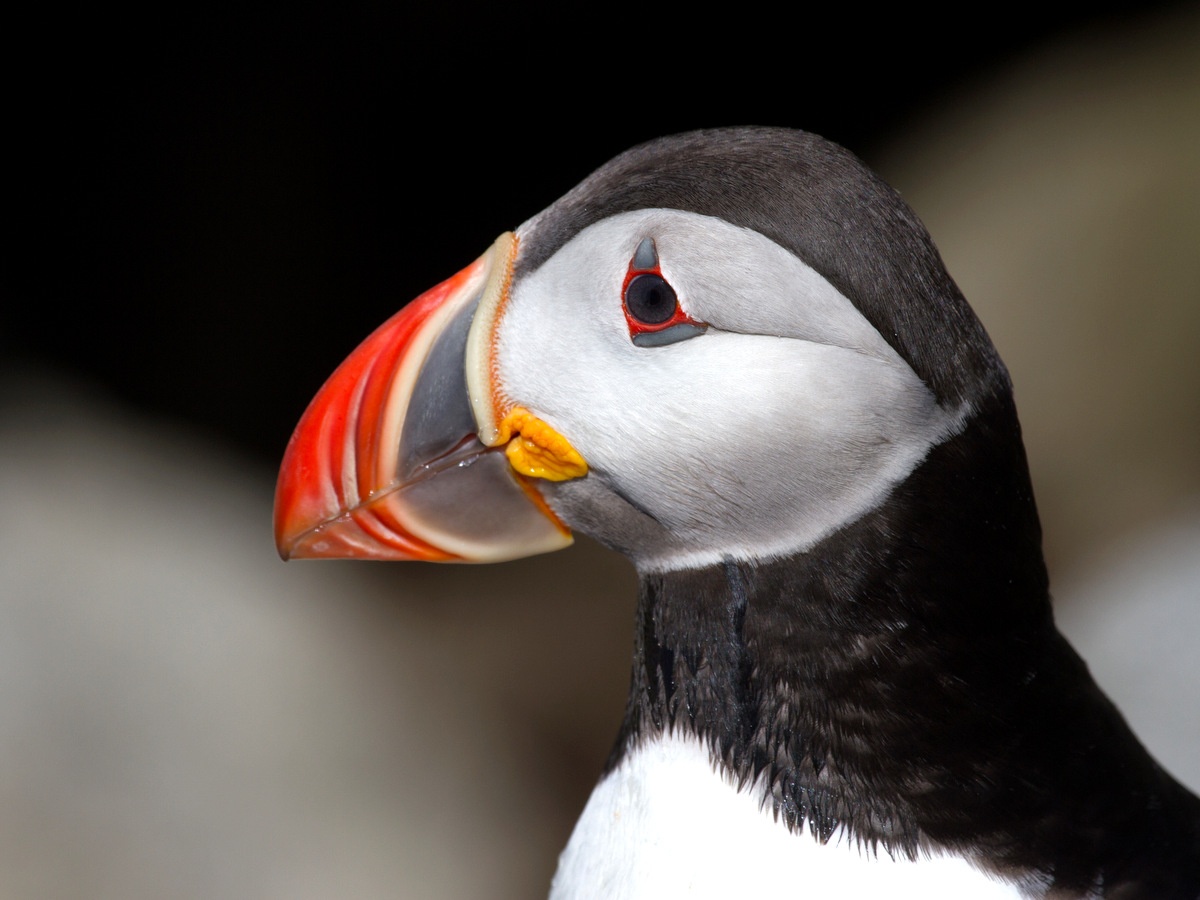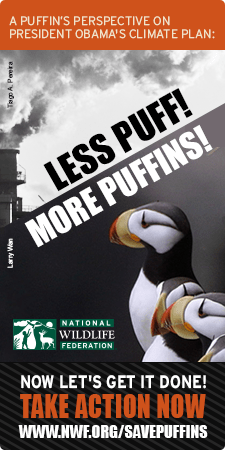We have much more to do and your continued support is needed now more than ever.
Climate Change Spells Peril for Puffins (Updated)

The puffin is a robust little bird with sad-looking triangular eyes of a crying clown matched with its large triangular beak (which changes from gray to bright orange in breeding season) and its slick-backed cranial feathers that give it a don-like hairdo. Needless to say, this bird’s quite the looker and has become a fan favorite. The Atlantic puffin can do it all: they are excellent swimmers, sleek flyers, skilled hunters and whimsical waddlers. Even their name is endearing.
Puffins Face Dramatic Decline
However, for the cute little round-bodied bird that has captured the affection of so many admirers, times are tough and their lives are increasingly perilous. A recent article by the Associated Press announced that puffin populations have seen a dramatic decline in the United States and other parts of the world as sea temperatures continue to rise.
Scientists have recorded declining survival rates for puffin fledglings (as if they weren’t cute enough, baby puffins have an equally adorable title—they’re called pufflings!) in Maine’s two largest colonies. Furthermore, the largest puffin colony in the Gulf of Maine, which lies just 10 miles off the coast, has suffered increased health degradation amongst adult puffins. Emaciated birds have washed ashore by the dozens from Massachusetts to Bermuda and could signal a worsening future for the bird as well as other migratory birds facing similar challenges spurred by climate change.
Like the many migratory birds that have had to literally shift their way of life, the puffin is finding it more difficult to find its major food sources as fish populations are displaced as ocean temperatures warm, causing mismatches in prey-and-predator relationships and shortages in the abundance of herring, their primary food staple. A marked deficit of roughly 5% annually has been recorded in the presence of herring in the diets of puffin populations. Many puffin populations are filling the void by hunting and feeding their young butterfish, which are now more abundant in the area as they too react to changing conditions. But, young puffins are simply unable to swallow these larger fish and many have died of starvation.
Low birth rates, high fledgling mortality, food supply disruption coupled with recent unprecedented die-offs, delayed breeding seasons, and rapid habitat destruction caused by more frequent and extreme ocean conditions could prove crippling for puffins and many more of our feathered friends.
Migratory Birds at Risk from Climate Change
A new report by the National Wildlife Federation details the effects rapidly changing climate is having on migratory birds across the country. Shifting Skies: Confronting the Climate Crisis, goes into greater detail on the potential damage climate change can have on critical migratory bird habitat, their main food resources, and the timing and direction of their migration patterns. Puffins are not the only birds in peril.
- Birds’ ranges are shifting and in some cases, contracting. 177 of 305 species tracked have shifted their centers of abundance during the winter northward by 35 miles on average in the past four decades.
- Coastal wetlands and beach habitats, home to birds like king rails and piping plovers, are disappearing, inundated by sea level rise.
- Global warming is exacerbating pests and disease, such as mountain pine beetle epidemics that have devastated many western forests resulting in mass losses of key habitat.
- Changing precipitation patterns threaten the Midwest’s prairie pothole region, known as “America’s duck factory.” Many ducks such as mallards and pintails face disappearing breeding habitat.
To learn more about how the climate crisis is affecting our nation’s migratory bird populations, check out the full report at www.nwf.org/BirdsAndClimate.
UPDATE June 25:

President Obama today announced a number of executive branch actions intended to reduce America’s greenhouse gas emissions and increase renewable energy production. The president has directed the Environmental Protection Agency to regulate carbon emissions from new and existing power plants. While those regulations are yet to be formulated, it’s a good step toward reducing the country’s carbon footprint.
In addition, the administration will make renewable energy production a priority on public lands, require stricter energy efficiency standards for appliances, and work internationally to eliminate the release of dangerous pollutants like hydroflourocarbons. For more information on the different elements of the president’s plan, see this Climate Progress piece.
Their future is still in flux, but you can act now to help puffins and other animals and wildlife from the damage of climate change by symbolically adopting a puffin and supporting NWF.





















